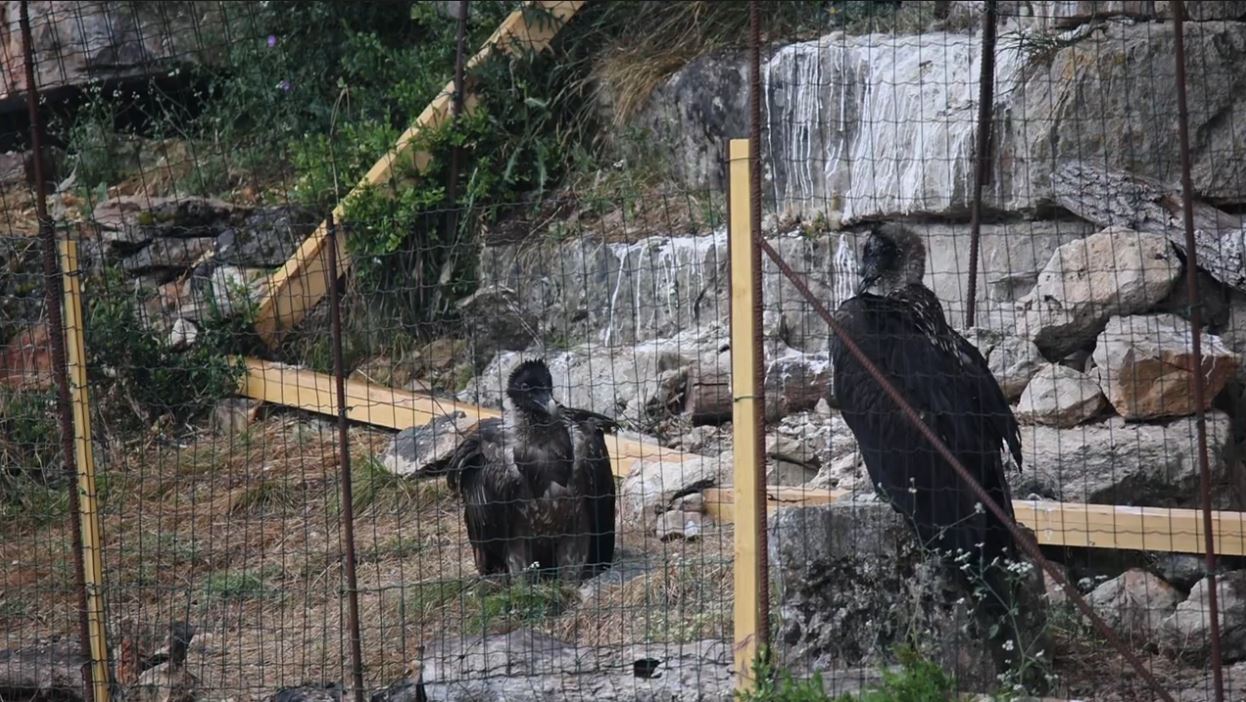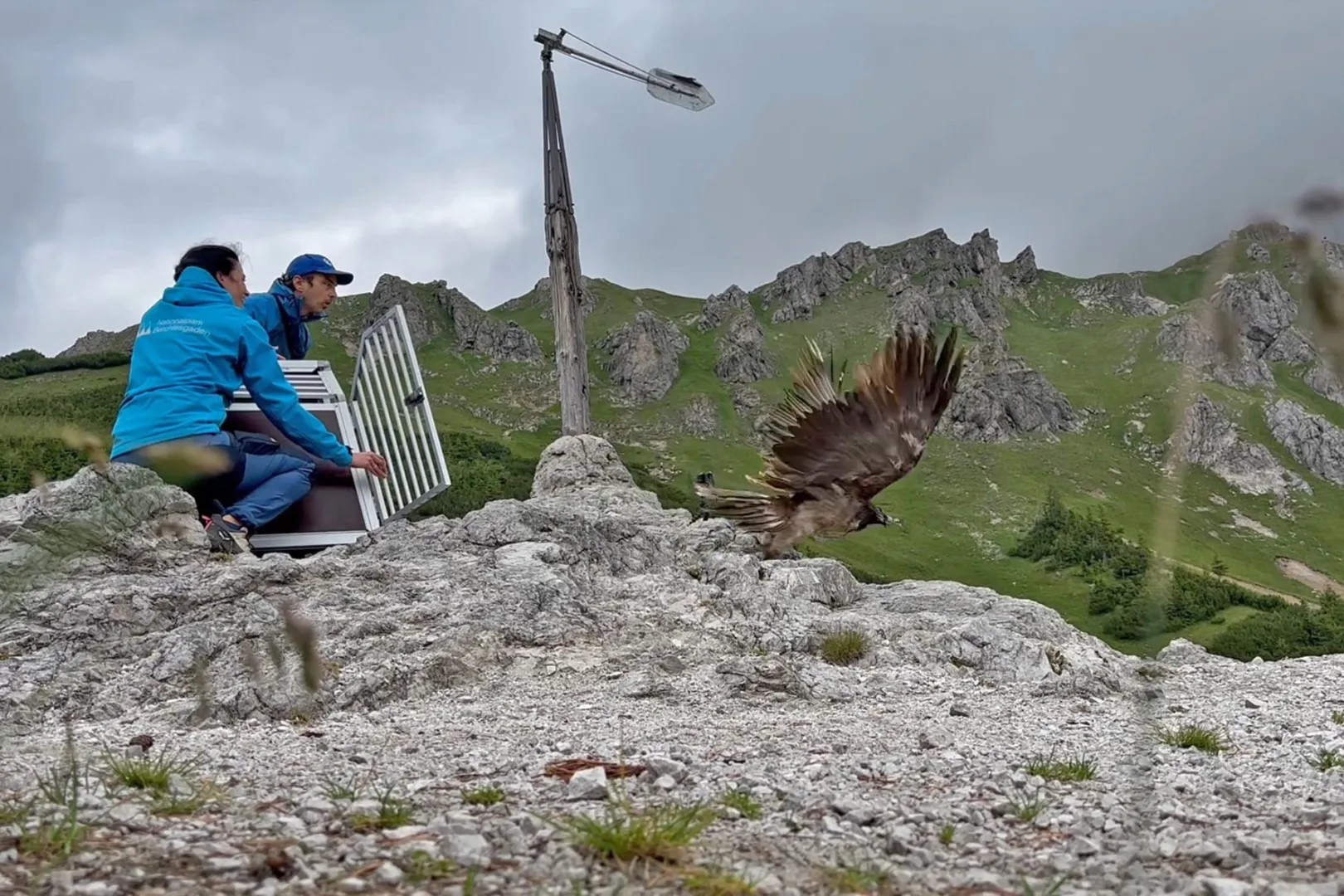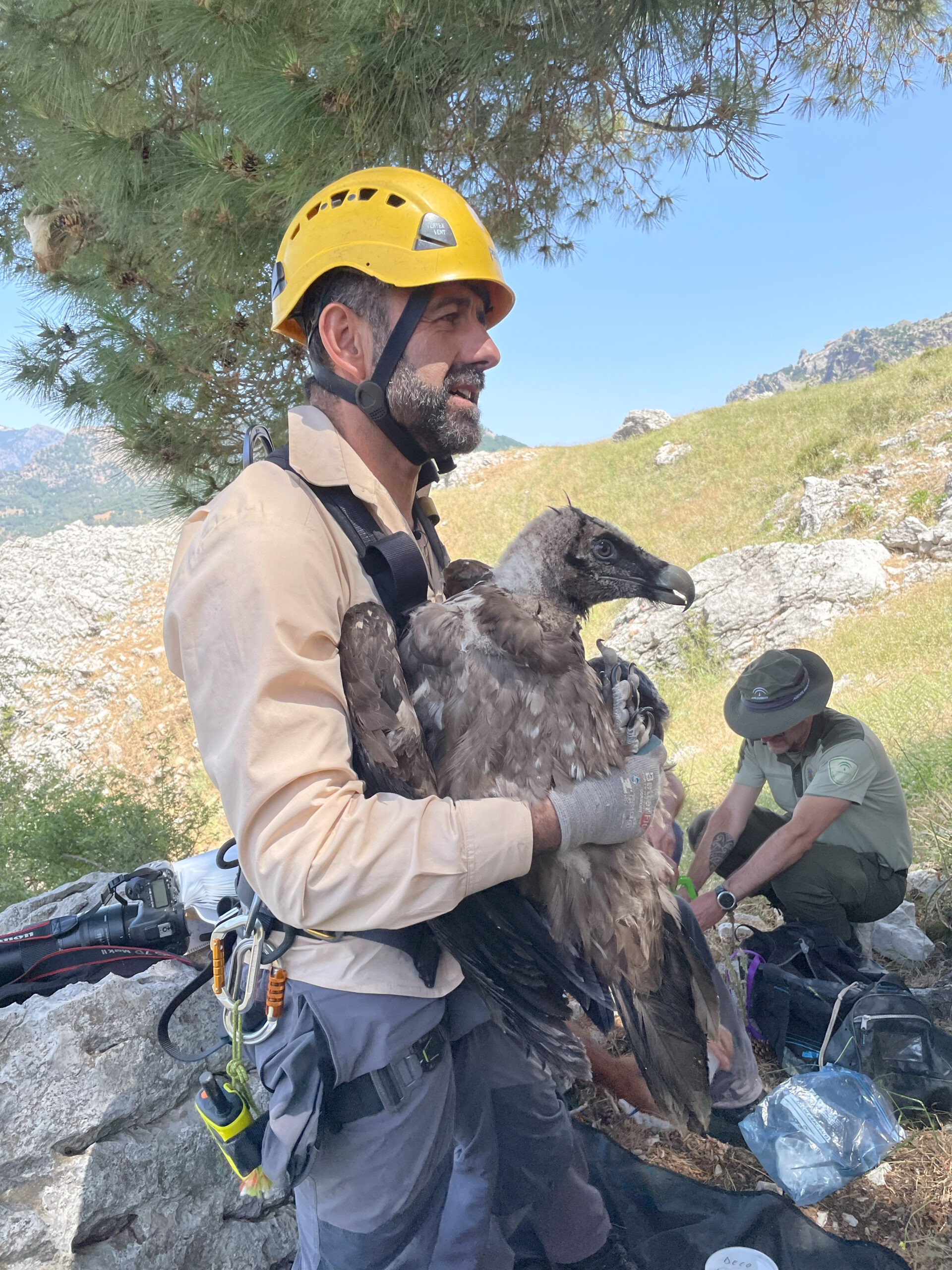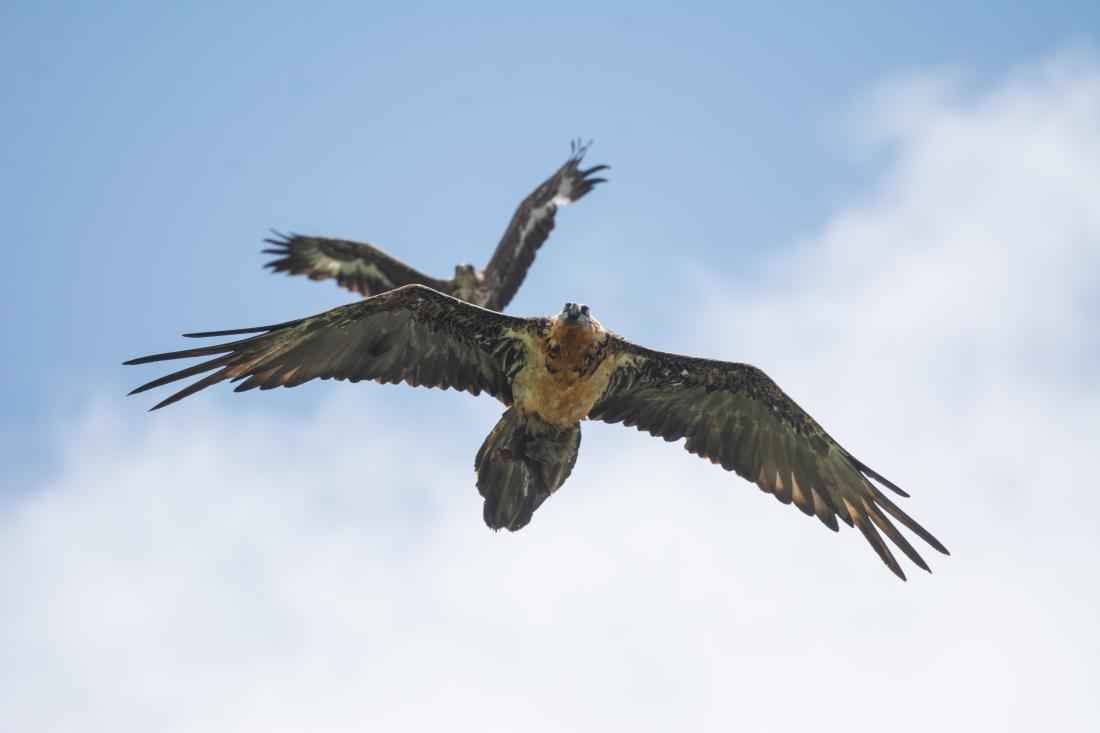Since its inauguration in 1996, the Bearded Vulture Captive Breeding Centre at Guadalentín has played a crucial role in the conservation of Bearded Vultures (Gypaetus barbatus) species. Located in Andalusia, the centre was established 10 years after the Bearded Vulture disappeared from the region.
Since then, Guadalentín has become an essential part of the Bearded Vulture Captive Breeding Network, contributing many chicks annually to reintroduction programs across Europe. To date,138 chicks have hatched at the centre, with an impressive survival rate of 129.
The heart of the centre: The laboratory
At the heart of Guadalentín’s operations lies the laboratory, often referred to as the “soul” of the centre. During each breeding season, the dedicated staff spends countless hours monitoring the birds via video surveillance. This system allows them to closely observe the vultures’ behavior, from mating and nest-building to any signs of aggression. The laboratory also plays a vital role in chick care—just two hours after a chick hatches, it is placed in a special incubator, lined with wool and heated to maintain the optimal temperature.
The meticulous care taken in this laboratory is essential to ensuring the survival of these vulnerable chicks, and it’s where many of the centre’s signature techniques, such as double adoptions, are implemented.

Six breeding couples and their unique stories
Guadalentín currently has six breeding pairs, each of them with its own unique dynamics.
Montero (M) and Nona (F): Montero is 15 years old and Nona 13 years old. Montero was born here in “Guadalentìn” and the female is from Richard Faust Zentrum in Austria. Montero and Nona have been together for three years, though Montero, born at Guadalentín, is still learning the ropes of parenthood.
Borosa (M) and Toba (F): they are both 25 years old and both of them come from Richard Faust Zentrum (Austria). When their chicks hatch, they are usually the smallest among all those hatched in the centre, but they also prove to be the most vital and active right from the start.
Lázaro (M) and Nava (F): Lázaro is 24 years old and hatched in Hannover Zoo, while Nava is 22 and she comes from Richard Faust Zentrum. Since Nava is not very keen on incubation and sometimes does not incubate her eggs at all, the centre gives the pair a dummy egg from the start and artificially incubates their eggs.
Elías (M) and Viola (F): Working with this pair is quite a challenge. They are both territorial, but Elias tends to be the most aggressive towards the staff, especially during the breeding season. Removing eggs for incubation and placing the dummy egg in the nest, or moving the chicks usually requires two people. On the other end, this pair does a great job raising healthy chicks every year.
Andalucía (M) and Salvia (F): Andalucìa was the first chick born in Guadalentìn in 2002. He shares his life with Salvia. He is quite territorial too and gets nervous when the centre personnel approach his home.
Josef (M) and Keno (F): Josef is 34 years old and is the second oldest bird in the centre, while Keno is 25. They are a beautiful and very close couple. Josef is not a very good parent. He does not know what to do with a chick, so he is removed from the cage when the pair is given a chick to raise. Keno raises both their chicks on her own and does an amazing job by herself.



Ambrosio the Raven: An unlikely peacemaker
In the rare case of breeding pairs fighting, the staff use a rather creative solution: Ambrosio, a raven.
Known as the “peace-bringer,” Ambrosio serves as a distraction for the fighting birds. By introducing an intruder into their territory, the pairs join forces to defend their nest, forgetting their quarrels. Despite his role as the scapegoat, or “scape-raven”, Ambrosio stays unharmed.
Guadalentín’s signature method: The double adoption
With only six breeding pairs in the centre, Guadalentín has developed an innovative approach to maximize the number of chicks raised each year—double adoption. This method allows the centre to raise between 10 and 12 chicks annually, despite the limited number of breeding pairs.
The process begins when each breeding pair already has one chick in their nest. Once another chick, usually about 5-6 days old, is ready to be adopted, the staff steps in. They remove the older chick (24-25 days old) and place it in a nest constructed of wool and branches. The younger chick is then moved from the laboratory to the parents’ nest. The beauty of this technique is that the parents continue to care for both chicks—warming the younger one in their nest and feeding both through an ingenious system involving a wooden panel and perches.
This method ensures that more chicks can be raised in optimal conditions and helps to increase the population of this endangered species.
Bearded Vulture EEP
The Bearded Vulture EEP (European Endangered Species Programme) is a crucial conservation initiative coordinated by the Vulture Conservation Foundation (VCF) on behalf of EAZA. This network brings together zoos, private collections, and specialised breeding centres across Europe, all dedicated to the survival of the Bearded Vulture. As one of these centres in the network, the Guadalentín Captive Breeding Centre plays a vital role in the programme’s success.
The Vulture Conservation Foundation (VCF) owns most of the Bearded Vultures in captivity in the world and collaborates with over 40 institutions to coordinate the captive breeding of Bearded Vultures in Europe. As coordinators of the Bearded Vulture Captive Breeding Network, we make sure that all partners accept, respect and follow the guidelines of the EEP and continually work with our colleagues across Europe to ensure the best breeding results from the birds within the network.




